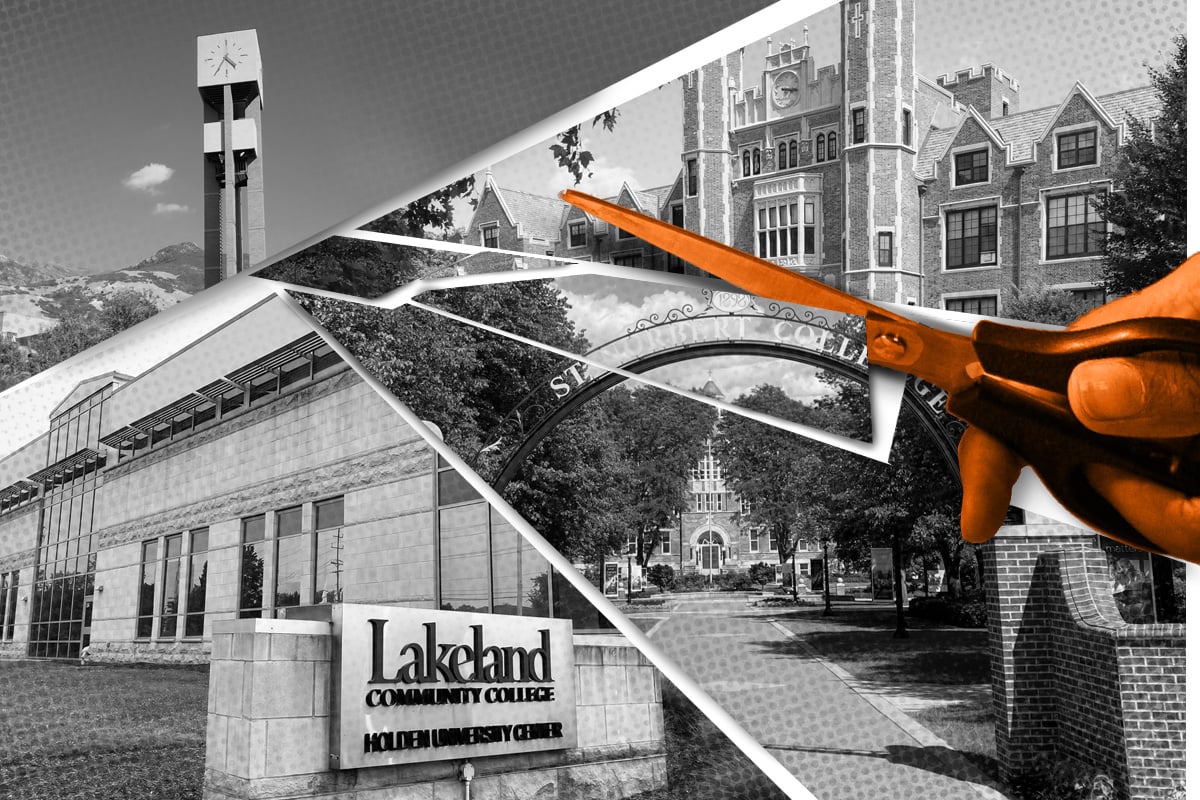Microschools, while not a new concept, are currently garnering increasing attention as an educational innovation. Microschools are small learning environments with typically less than 150 students that offer personalized and student-centered learning experiences. Teachers hungry for more autonomy, families seeking personalized learning, and the constraints of education budgets are all fueling the demand for microschools. Last Fall, Getting Smart collaborated with the Walton Family Foundation on the Big Push for Small Schools grant program to foster a network of microschool leaders by offering grants to propel the development of these innovative learning spaces, focusing on operators looking to scale their high-quality models. Yet, the question remains: what does it mean to scale a microschool? And, how broad is the microschool landscape?
Charting the Microschool Landscape
The microschool landscape has grown tremendously in both public and private sectors. Our early research classified microschools into four unique categories: operators, intermediaries, schools within schools or programs, and incubators. Through continued efforts within our microschool initiatives, we’ve identified a more complex ecosystem that exists with both the private and public sectors, as well as unique public-private partnerships. Additionally, homeschools and learning pods (multi-family) fall into the microschool landscape. While we have articulated a number of elements across the landscape, we also acknowledge the overlap in some of these models. By naming the elements within the landscape, all educators and parents can see opportunities for more options across all sectors to better serve their students and children.
Growth and Scaling Microschools
When we hear the term scaling as it relates to growth, we often loosely define it as simply expanding. Harvard’s business school defines scaling as “a business growing revenue more quickly than its costs” and growth as “the process of increasing revenues and resources at an even rate.” But how does that translate to microschools?
Growth in microschools refers to the process of increasing enrollment, resources, and educational offerings – usually at a single site. This might include adding more teachers, expanding facilities, or introducing new programs to meet the needs of a growing student population.
Scaling in microschools involves expanding the reach and impact of the educational model while maintaining or improving the quality of education provided. This expansion might include impacting more students by increasing the number of campuses or developing partnerships with other educational institutions.
As the demand for innovation and personalized learning options grows, so does the need for microschools. This demand can be met by both growth and scaling approaches.
Scaling Microschools in the Private Sector
A significant number of private microschools have launched over the last four years. Leading the charge in fostering the proliferation of microschools are organizations such as VELA, National Microschool Center, and Microschool Solutions, which stand as prominent networks of edupreneurs that offer alternatives to conventional schooling. Some of these microschool leaders want to expand their reach deep and not wide. Private-sector microschools can scale their model through decentralized or centralized networks.
In decentralized networks, microschools codify their framework for replication by others. This form of scaling gives the school leader full autonomy of their own site while utilizing an existing framework. Although this type of scaling involves some risk in quality control, it provides leadership with autonomy to tailor a school model to the community it serves–a primary objective for many microschools. This idea of replicating a specific school model is not new (model-provider networks exist in both private and public sectors). Still, it has been adopted by microschools like Insight Colearning which joined the One Stone growth network as an entire replication site.
Other private microschools scaled their impact through more centralized efforts. This allows them to maintain the quality and assurance of their model by opening and operating multiple sites and building a centralized affiliate network. Notably, private model-provider networks or intermediaries like Prenda, Acton Academy, and Wildflower Schools operate in this way through direct operational support and sharing tools or resources. For example, growing networks like Primer are leveraging technology to share human capital across their network.
Intermediaries can also function as operators. For instance, Kaipod is utilizing a hybrid learning model to grow and scale its model into a centralized network while also growing its network of decentralized affiliated schools and homeschooling cooperatives, referred to as learning partners.
These private, microschool networks primarily utilize a tuition-based model, with some accessing public funds through Educational Savings Accounts (ESAs) or engaging in charter partnerships, like that seen between Sequoia and the Black Mothers Forums. While much attention has focused on these private-sector solutions, a robust microschool ecosystem has existed and continues to evolve in the public sector as well.
Scaling Microschools in the Public Sector
Microschools in the public sector are not a new concept. These include the original one-room schoolhouses, existing rural schools, and the school within a school model. However, with the emerging growth of the private microschools sector, new models are surfacing and existing models are rebranding, utilizing microschools as platforms for researching, designing, and scaling equitable practices in the public sector.
We have also found that microschools can exist within a district to provide unique and niche offerings, similar to that of a magnet choice school. These program-specific models are designed to support niche offerings in the school that is not intended to scale throughout the district. EDGE High School (Liberty Public Schools, MO) and Iowa Big (Cedar Rapids, IA) both serve as specific programs within or across districts that are distinctly different from the other educational programs.
R&D models are designed around a larger district’s intention for a learning model and hope to diffuse ideas through a school district. Issaquah School District (WA), Lamont Elementary School District (CA) and Escondido School District (CA) are all designing and launching microschools. Some districts like Denver Public Schools (partnering with Launch microschools) or Mesa Public Schools (partnering with Prenda in Arizona) find that existing intermediaries can facilitate faster launch efforts.
For many years, high schools have built school within a school models, sometimes encompassing all learning experiences at the school. Laguna Creek High School (CA) offers a number of career-related microschool models within the larger comprehensive high school. Especially in high schools, CTE pathway programs are becoming increasingly prevalent to better prepare young people for the world of work.
ASU Prep Microschools (now ASU Prep Digital Plus), Gem Prep Learning Societies, and Purdue Polytech High Schools Lab School are examples of public schools launching satellite microschools in multiple sites but using similar learning model structures as their original bricks/mortar sites (these three examples are all charter schools/networks). ASU Prep co-locates within ASU facilities and taps into university expertise while enrolling students in ASU Prep Digital programs. Gem Prep Learning Societies enroll students in Gem Prep Online programs while hosting small groups of students in rural sites around Idaho. Purdue Poly launched its first microschool in 2023-24 to expand access outside of their main campus sites.
Lab Schools, while sometimes larger than typical microschools, serve as training and support locations for schools of education. University of North Carolina operates a number of lab schools at university campuses across the state – in partnership with local districts.
Businesses are also catching up to the idea of co-locating microschools as a work-based learning model. These models have the potential to provide robust real-world learning experiences while leveraging the microschool as a pipeline for future recruitment. GPS Education Partners runs a set of district-supported, business co-located learning centers in Wisconsin for students to gain work-based learning experiences through apprenticeship models.
School districts and universities aren’t the only systems scaling microschools in the public sector. Public service institutions and organizations such as libraries, zoos, farms and museums have the ability to co-locate microschools that are funded through public dollars to the organization.
Public-Private Partnership Microschools
Although we’ve identified many ways in which microschools can exist both publicly and privately, that is not to say it must be either/or. Microschools are not monolithic. My Tech High and Khan World School could be classified as microschool provider models that can be adopted by both public and private sectors. Moreover, informal cooperative structures that have existed for centuries operate within both sectors–leveraging partnerships with families and even charter school districts to grow and scale. In Snoqualmie Valley, the district runs a part-time 100+ student microschool for homeschooled elementary and middle school students as part of the Parent Partnership Program.
Conclusion
The diversification of school models reflects a broader understanding that one size does not fit all in education. Across public, private and innovative partnerships between public and private sectors, these microschool models represent a big tent of efforts aimed at making education not only more personalized but also more accessible and effective. By embracing these varied educational landscapes across the public and private sectors, communities can better cater to the diverse needs of learners, ensuring that every student has the opportunity to thrive in a changing world.
How Getting Smart is Thinking About Microschools
At Getting Smart, we recognize microschools as catalysts for educational innovation. Through our funding efforts and technical assistance, we aim to support microschools driving innovation to scale or expand their impact. Join the conversation by participating in our upcoming community of practice, where we explore microschool models within larger systems. Whether you’re a district leader seeking to scale innovation or a microschool leader looking to expand your model, we invite you to join us in shaping the future of education through microschools.
Additionally, we’d love your feedback on how we are mapping the microschools ecosystem. Please share any thoughts using the form below.
The post Small Schools, Big Umbrella: Expanding, Defining and Scaling the Microschool Ecosystem appeared first on Getting Smart.
The blog explores the increasing attention on microschools as a personalized educational alternative and highlights different scaling approaches for microschools in both private and public sectors.
The post Small Schools, Big Umbrella: Expanding, Defining and Scaling the Microschool Ecosystem appeared first on Getting Smart. Learning Design, New Pathways, Microschools, personalized learning Getting Smart




